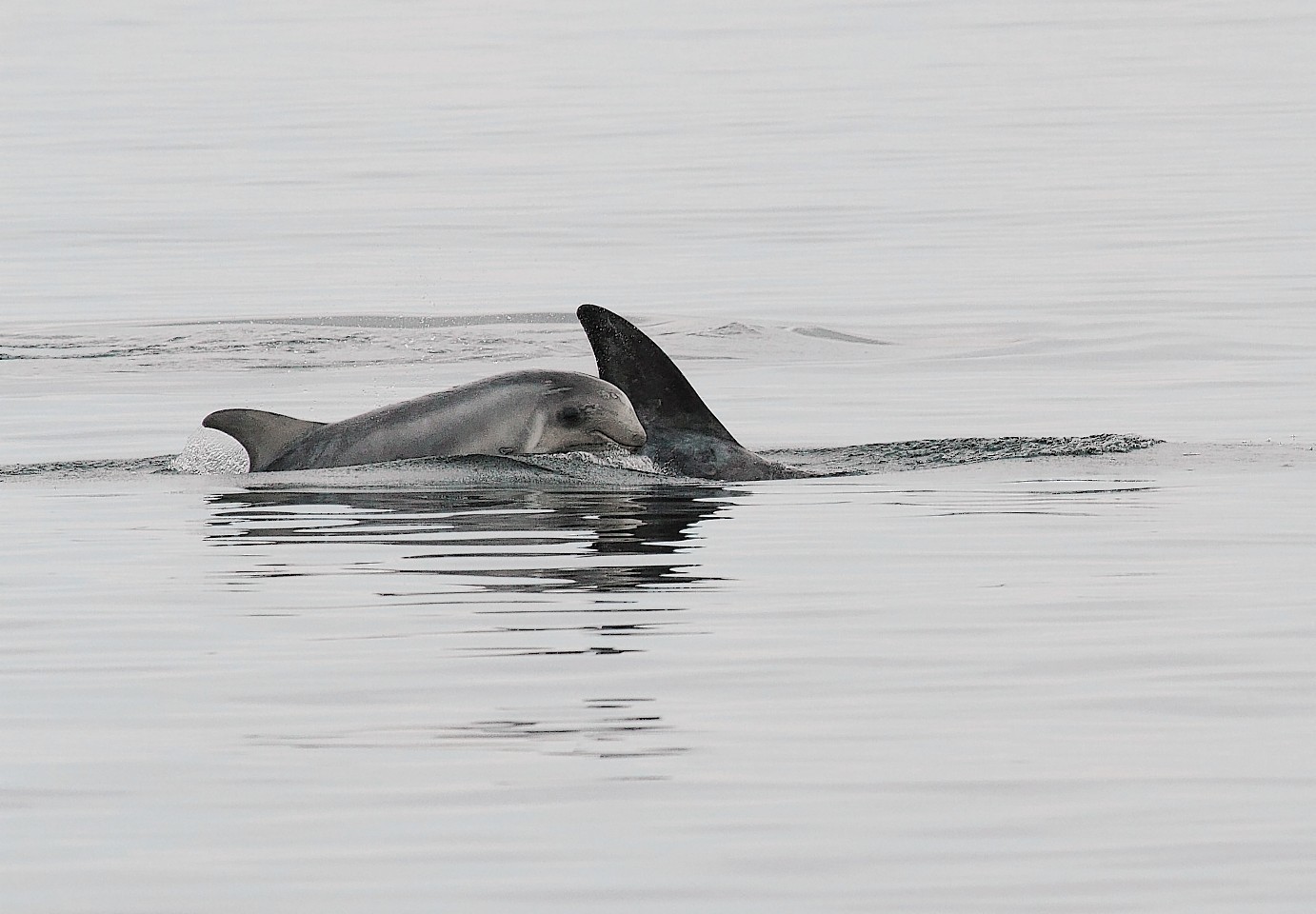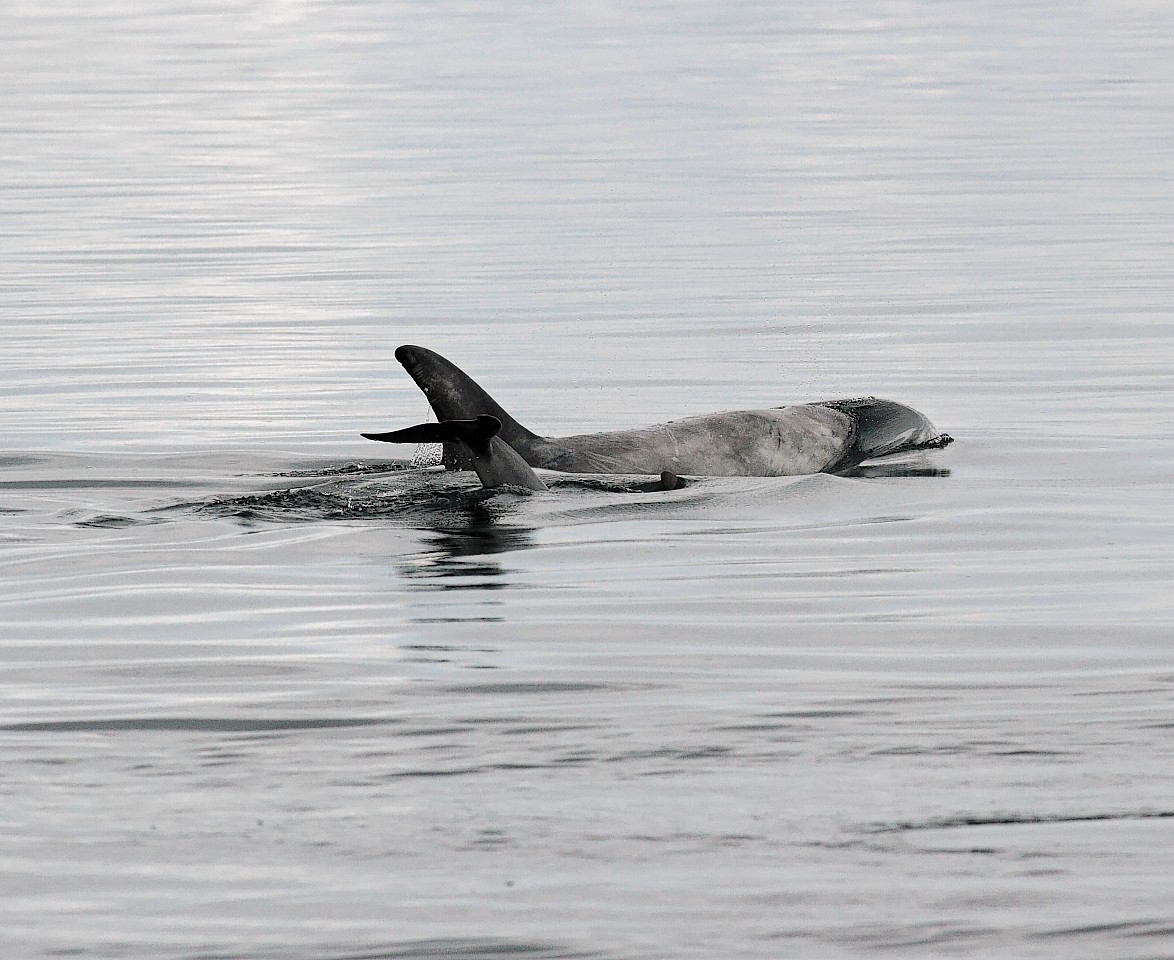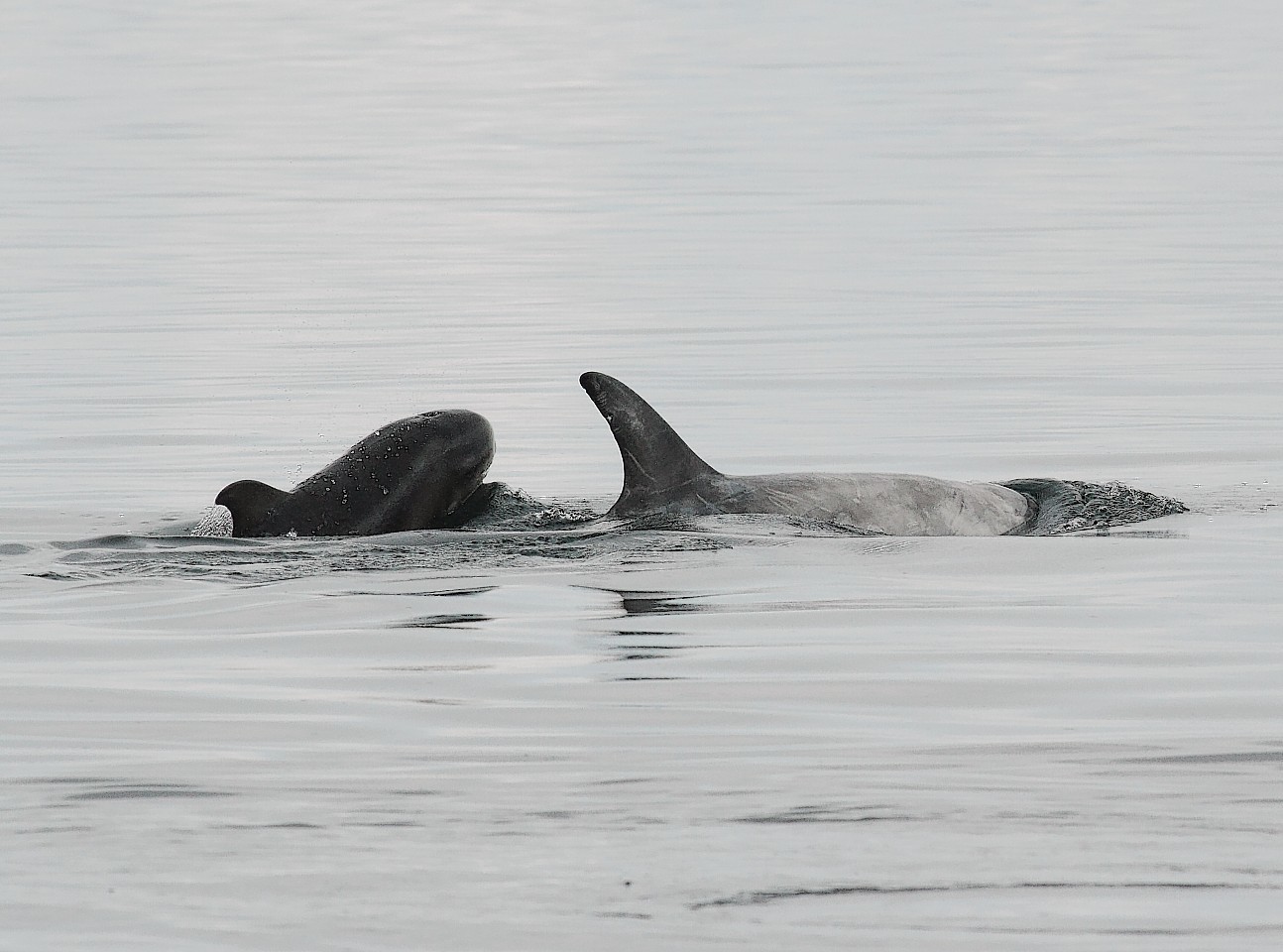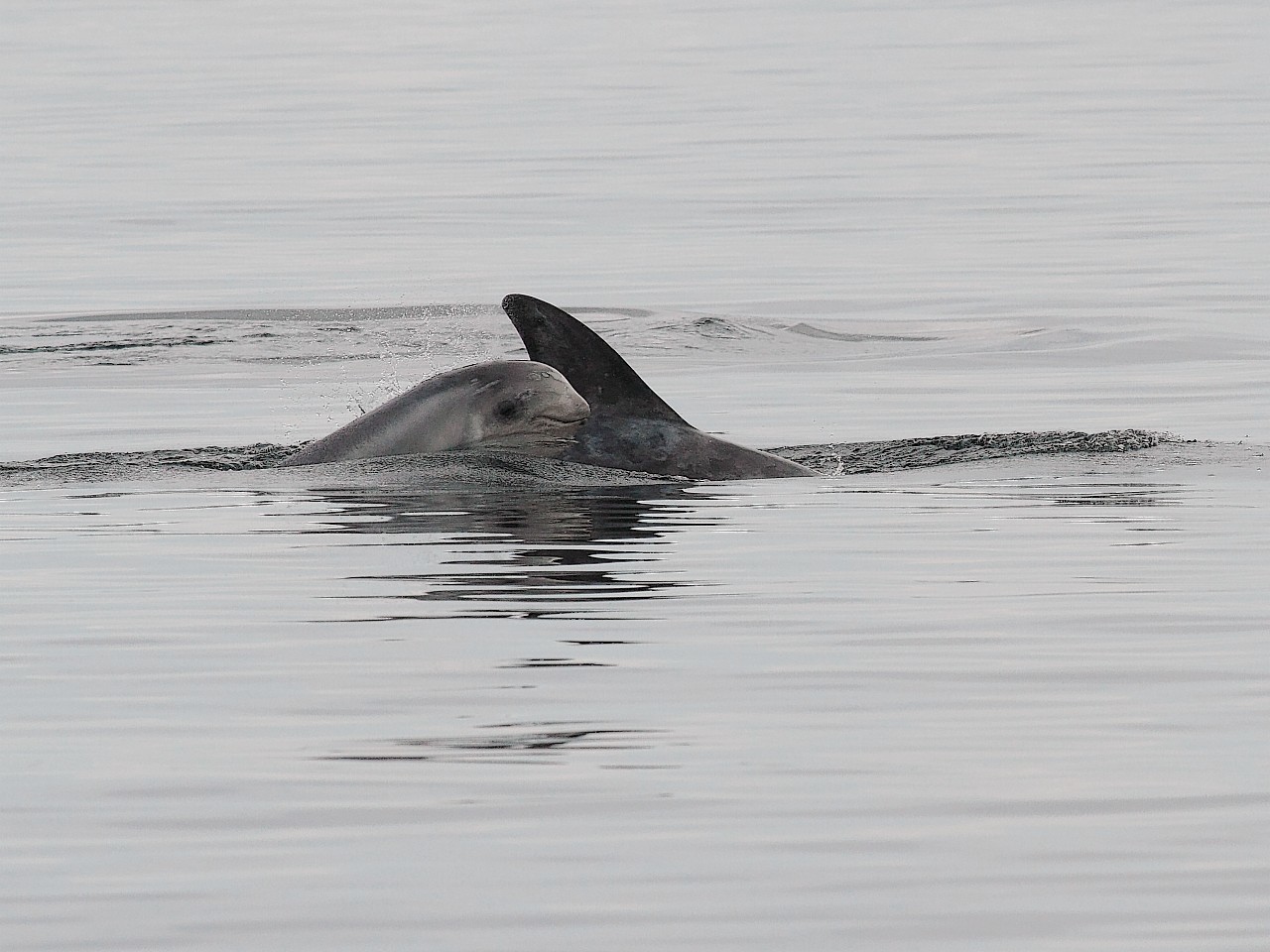Even young dolphins like to hitch a ride with mum – as these remarkable pictures show.
The pod was captured east of the island of Ronay – which lies between North and South Uist in the Outer Hebrides – by wildlife photographer Steve Duffield.
He was aboard Lady Anne Boat Trips operated by Nick Ingledew when the pod of Risso’s dolphins came nearby.
“There were at least eight dolphins within the pod which contained a few young animals although the pale grey one with the adult was the youngest,” said Mr Duffield of Western Isles Wildlife. “It was magical.”
The waters off north-west Scotland provide important habitat for the distinctive Risso’s dolphins, of which comparatively little is known.
Risso’s dolphins have a robust, stocky body and a tall, curved dorsal fin. Adults measure up to 12.5 feet in length and can live for more than 30 years.colour pattern varies greatly between individuals, and with age. Calves are born grey, but turn darker grey to dark brown as they become juveniles. As they age, the skin tone lightens to silvery-grey in some cases and the body is increasingly covered with scratches and scars inflicted by other Risso’s dolphins and prey species such as squid.
The north of Scotland represents the northern limit for the species. In the Hebrides, Risso’s dolphins tend to inhabit deeper water, which is home to their preferred prey of squid, octopus and cuttlefish. They can occasionally be seen in coastal areas.
The Hebridean Whale and Dolphin Trust says that in the Hebrides, Risso’s dolphins are usually seen singly or in groups of up to 20 animals, although in other areas they are reported in large groups of several hundred individuals.
“Social behaviour is gregarious and sometimes rough, possibly accounting for some of the scars and tooth rake marks seen in adult animals; observed behaviours include breaching, tail slapping, spy-hopping, splashing and sometimes striking one another. Risso’s dolphins are commonly seen travelling and surfacing slowly and will rarely approach vessels or bow-ride,” it says.
“An estimated 86% of Europe’s Risso’s dolphins are found in UK waters with Scottish waters being a particular stronghold.”
Very little is known about the population structure of Risso’s dolphins in Scottish waters. The gestation period is estimated to be 13-14 months with births in Scottish waters believed to occur between July and December.
The majority of UK sightings of Risso’s dolphin occur along the west coast of Scotland and the Outer Hebrides – probably due to prey availability and the proximity of the continental shelf edge to the coast.is no population estimate for Risso’s dolphins within Scottish territorial waters or more widely within the UK or North East Atlantic.year hybridisation between dolphins was documented for the first time in UK waters.
Top cetacean body, the Whale and Dolphin Conservation said fieldwork off the Isle of Lewis between 2010 and 2014 recorded four dolphins with characteristics of two different species.
WDC said photographs suggested bottlenose dolphins have been mating with resident Risso’s dolphins.
It said it was not yet known why the animals were breeding.
It added that the occurrence of four atypical dolphins consistent with hybridism in one small geographical region was highly unusual.
WDC have been annually collecting observations and photographic identifications of Risso’s dolphins around Lewis. It has a catalogue of every Risso’s dolphin that it has encountered since the project was set up in 2010 – enabling a clearer picture of their presence and absence patterns, habitat use, population trends, behaviour and social structure.



